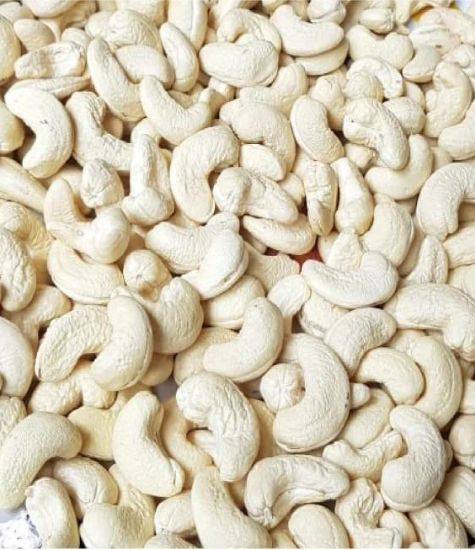Cashew Kernel

Cashew Kernel
Cashew kernels are the edible seeds obtained from the cashew tree (Anacardium occidentale), which is native to northeastern Brazil. The cashew tree produces a pear-shaped accessory fruit, often referred to as the cashew apple, but it is the kidney-shaped nut or seed (commonly known as the cashew nut) attached to the bottom of the cashew apple that is of primary interest.
- Detail :100% Organic
- Email address :vincentaasir@gmail.com
- Phone number :+91 8220499403
Cashew kernels are typically kidney-shaped or bean-shaped. They have a smooth surface and a slightly curved shape. Cashew kernels have a mild, buttery flavor that is often described as slightly sweet. The texture is creamy and somewhat crunchy when roasted.
Cashew kernels are rich in healthy monounsaturated fats, protein, and essential minerals such as iron, magnesium, phosphorus, zinc, and copper. They also contain vitamins like B vitamins, particularly thiamine (vitamin B1) and pantothenic acid (vitamin B5). The process of obtaining cashew kernels involves several steps, including harvesting the cashew nuts, drying, shelling, and roasting. The outer shell of the cashew nut contains a toxic substance known as urushiol, which must be carefully removed during processing. While cashew kernels offer nutritional benefits, it's essential to consume them in moderation due to their calorie and fat content. Some individuals may be allergic to cashews, and caution is advised for those with known nut allergies.
| Property | Value |
|---|---|
| Scientific Name | Anacardium occidentale |
| Common Name | Cashew Kernels |
| Color | Light cream to pale ivory |
| Shape | Curved, kidney-shaped |
| Taste | Delicately sweet and buttery |
| Texture | Crispy and slightly creamy |
| Uses | Consumed as a snack, used in cooking, baking, and as a topping for desserts |
| Nutritional Content | Rich in healthy fats, protein, vitamins, and minerals |
| Storage | Store in a cool, dry place to prevent rancidity |
